IN FOCUS: Changing weather patterns a bane for Malaysia's fishery sector
Climate change has thrown monsoon, wind and wave patterns into disarray, affecting the fishermen’s operating costs and potential of pulling in a good catch.
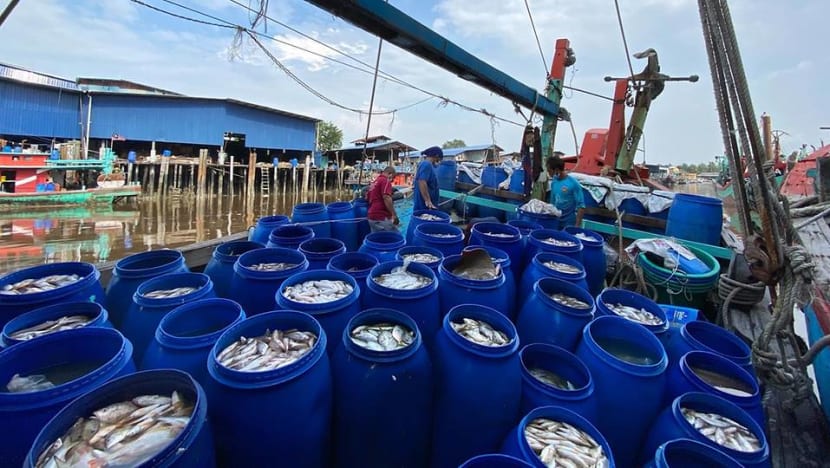
Barrels of seafood ready to be loaded onto Hai Seng Huat's wharf from a fishing vessel. (Photo: Facebook/Hai Seng Huat Fishery Sdn Bhd)
SEKINCHAN, Selangor: A crane operator carefully transferred barrels of seafood from a docked fishing boat’s deck to the Hai Seng Huat Fishery’s wharf, while customers walked gingerly on the wet floor of the fishery, making their picks.
The catch was great, particularly for kembung (Indian mackerel), but for Mr Chia Tian Seng, 47, one of four brothers who founded the fishery, the weather has been a cause for concern for fishermen and middlemen over the past decade.
“Normally, the wind would be constant in one direction during monsoon season, but now, the wind and the currents are unpredictable,” Mr Chia Tian Seng, who used to run his own vessel for 10 years, said.
“The winds are uncertain, such that normal spots where you’d expect to have fish don’t have the same amount of catch or are even empty,” he added.
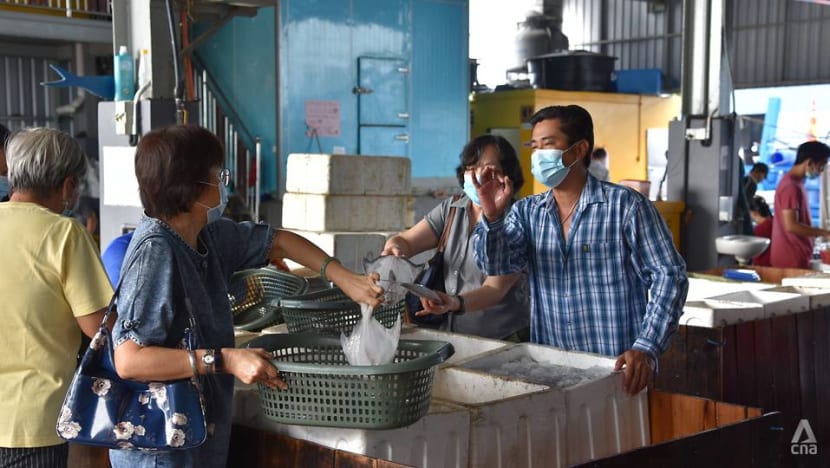
Fish that would not normally be in season are caught instead. This is another change Mr Chia Tian Seng noticed.
“Previously, you’d almost never get squid during Chinese New Year season here. It’s more in season towards mid-year.
“But this year, we’ve been catching a few tonnes here and there since the beginning of the year,” he said.
His elder brother Mr Chia Tian Hee, 51 who is the current president for the Sekinchan Fishermen and Fish Traders Welfare Association and the national Fish Industry General Association, said fishermen struggled to find kembung a few years ago.
"But last year and this year, fishermen have been pulling in kembung like you wouldn't believe it, until even we are asking what's going on," he said.
For local fishermen out on the sea, the effects of climate change become more apparent as man-made carbon emissions continue to increase.
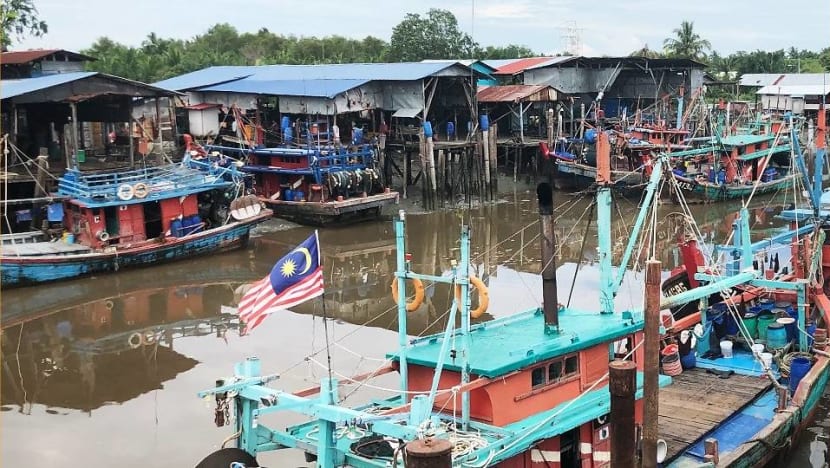
They have noticed that they need to venture farther and thus spend more on fuel to look for fish. Uncertain weather patterns and the difficulties and danger that come with it are also a challenge.
Eventually, this may affect Malaysians who are among the highest consumers of fish per capita, eating an average of 168g of fish per day according to research published in 2016.
Meanwhile, experts worry about the impact of climate change on the marine food chain and local ecosystems, as warmer and more acidic seas threaten the health of marine life.
READ: Sabah sea gypsies grapple with dwindling fish catch, sinking villages as climate change threatens way of life
UNCERTAIN WEATHER PATTERNS
According to the Southeast Asian Fisheries Development Center, sea-caught fish is the main contributor to Malaysia's fish production, valued at over RM10 million (US$2.5 million) in 2016.
Data from the Department of Statistics Malaysia showed marine capture, which refers to sea-caught fish, at 1.45 million tonnes in 2018 and 1.46 million tonnes in 2019.
However, Mr Tee Kai Seng, 27, who has been sailing for a decade, said he noticed that the fish he caught were getting smaller.
“It also costs more to run a boat these days, because you burn more fuel sailing out farther,” he said.
“Last time, I could earn over RM2,000 to RM3,000 each trip. Now I only earn less than RM2,000 after deducting my costs,” he added.
Mr Tee said fishermen often have to sail even farther these days because the fishes were moving. "The normal spots I knew 10 years ago are rather bare now.”
Additionally, the government has pushed out the no fishing boundary for commercial trawling, in an attempt to control the damage from trawl fishing. While commercial trawling was banned within a 5 nautical mile zone from the shore, it has been now been revised to 8 nautical miles.
But venturing further comes with its own risks in the narrow Straits of Malacca.
As one of the busiest shipping lanes in the world, local fishing boats not only have to contend with container vessels. Fishermen also have to be wary of tangling with the Indonesian maritime authorities.
Changing weather patterns were also a concern.
Previously, Mr Chia Tian Seng said, fishermen could depend on reliable winds such as the northeast and southwest monsoons, which blow from November to March and May to September, respectively.
“But sometimes when you sail out, the weather and the wind are all over the place. You also can’t find the fish because the weather drives them away too,” he said.
The same was said by another fisherman-turned-fishery owner, Mr Hong King Mooi, 54 who for a decade also sailed out for days at a time to catch fish.
Mr Hong still has friends and relatives who sail and shared that sometimes, the unpredictable weather meant intense storms and strong winds.
"You get two (to) three days' of wind blowing from the southeast. Then suddenly, the wind changes (to blow) from the north-east, and then they change again," he said.
“At that point, some people don't even dare to sail out. The waves and the wind are so strong that the fishermen fear for their safety," Mr Hong said.
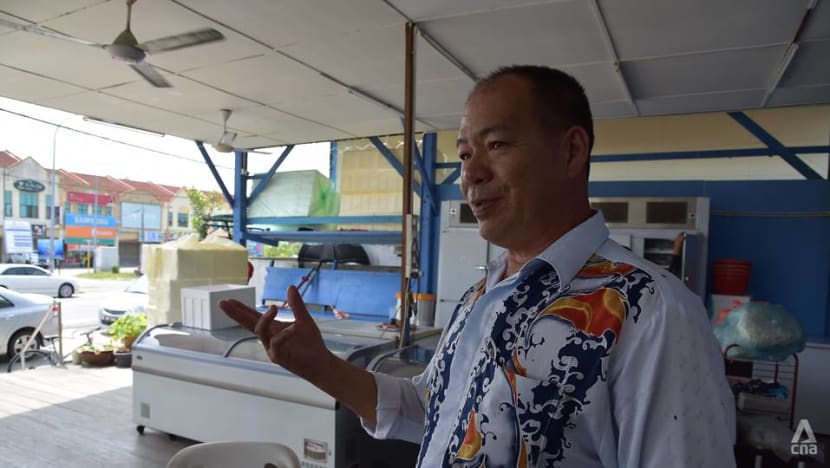
Luckily, the Malacca Straits, he said, was not as open a body of water as the South China Sea, so the weather effects are not as bad.
Mr Chia Tian Hee, the fishermen association president, said fishermen had begun noticing the changing weather patterns from 2004 onwards.
"We do not say that the weather suddenly changed in 2004, but we gradually noticed that the winds and the waves became more unpredictable with each passing year," he told CNA.
"Our colleagues on the East Coast and facing the South China Sea have other issues, but along the Malacca Straits, fishermen from other states, not only Selangor, have also told us the same problem," he added.
Mr Chia Tian Hee also said that the weather had turned so bad that a few small vessels had capsized in the straits last year, but luckily all hands were rescued.
"People become more cautious now, because this is their livelihood."
"If they sail out to a number of spots but find no fishes because the weather has driven them away, they still have to pay for the fuel and workers' wages," he noted.
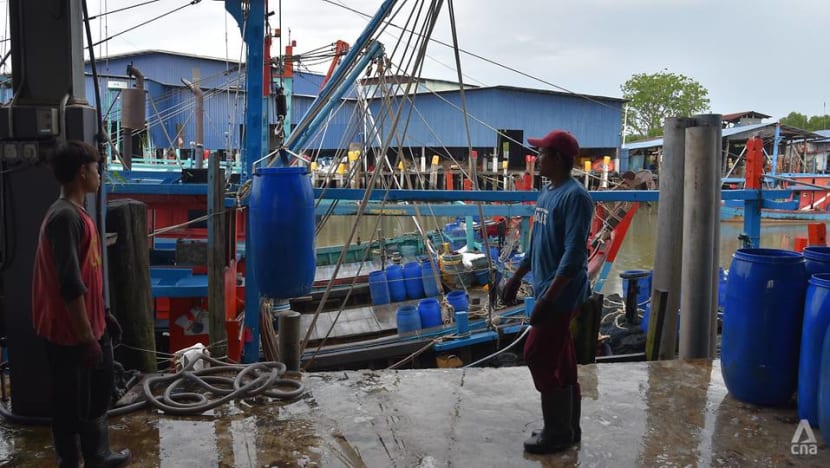
READ: With movement restrictions eased in Malaysia, reforestation efforts pick up momentum again
MARINE PROCESSES
As the fishermen explained, the uncertain weather patterns make it difficult to find fish or even to sail out to the sea.
However, wind action is also necessary for a process called upwelling, where the wind blows away the warmer surface water, allowing the colder, but nutrient-rich waters from lower depths to rise to the surface.
According to Associate Professor Mohd Fadzil Mohd Akhir, the director for Universiti Malaysia Terengganu's (UMT) Institute of Oceanography and Environment (INOS) at peninsular Malaysia's East Coast, the upwelling process has been affected by climate change.
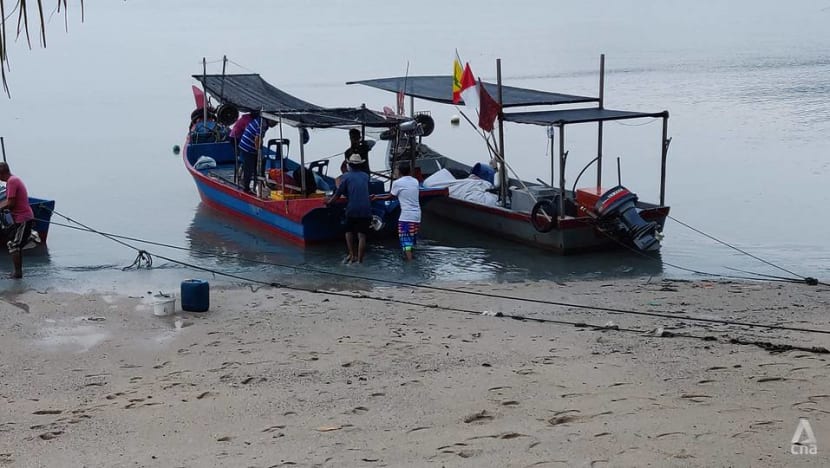
"Upwelling is important because up to 50 per cent of global fish stocks depend on this process," he told CNA.
"The natural process, such as the southwest monsoon season during June to August on the East Coast, (means) you have the winds moving in a certain direction, allowing the colder waters to come up.
"But when you have changes in the climate, this will affect the wind intensity, making it stronger or weaker. So the upwelling process could be reduced," he said.
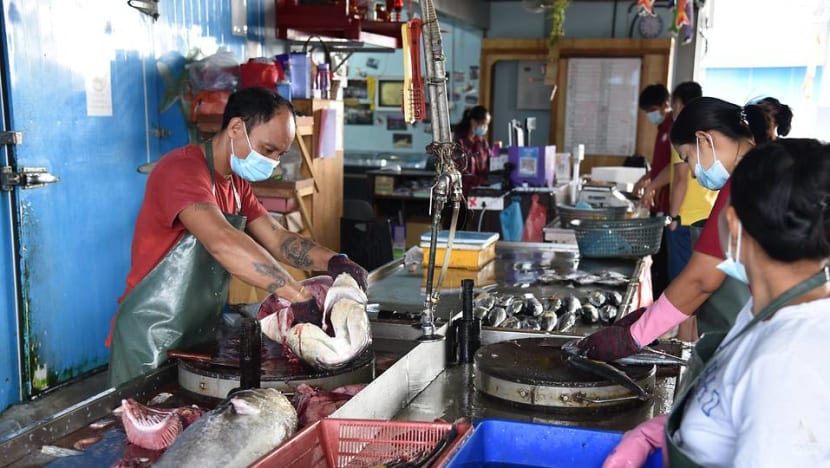
Alternatively, Assoc Prof Mohd Fadzil said, more intense winds would also enhance the process, allowing for more nutrients to be brought up in a more intense - but shorter - process.
"In the South China Sea, the upwelling process is more seasonal, compared to places such as California in the United States, where the process is all year round, so when this changes, the impact is more keenly felt," he added.
INOS, the associate professor said, was starting to monitor these processes, such as observing fish sizes and comparing that over the past 10 years, as well as observing where fish schools were congregating at and if they were shifting.
"Our studies are not to the extent of that done in the Pacific yet, but we expect similar effects," he said.
Explaining the ocean acidification process, Dr Aileen Tan, the director for Universiti Sains Malaysia’s Centre for Marine and Coastal Studies (CEMACS), said that the lower the water temperature, the more carbon dioxide (CO2) could be dissolved in it.
“Thus cold, higher-latitude surface waters like the polar regions can retain more CO2 than warmer lower-latitude like the tropics,” she said.
In the tropics like Malaysia, Dr Tan said, rising temperatures of surface waters were slowing down the carbon exchange between deep and surface waters.
“Wind plays an important role, as it mixes surface and deeper waters and carries CO2-saturated waters to the deeper areas of the oceans," he said.
He added: “With rising surface temperatures, it’s harder for winds to mix these layers, which become increasingly stratified.
"The warmer the water, the less dense it becomes and harder it is to get it mixed. The surface waters warm to a point where the difference in density between the layers is so large that wind and waves can no longer generate enough energy to incorporate both the water layers."
"Hence, in locations with warmer waters, the upper layers are more saturated with CO2 and cannot absorb more, and the lower (deeper) layers have less oxygen," Dr Tan explained.
More CO2 in the waters means increased acidity.
READ: Shrinking sea meadows store more carbon than forests. Scientists are racing to track what's left
DISEASES COULD EVENTUALLY HIT THE FOOD CHAIN
For experts and environmentalists, the warmer temperatures and acidification do not bode well for all marine life, including the commercially important fish stocks that make up an important part of most Malaysians’ diets.
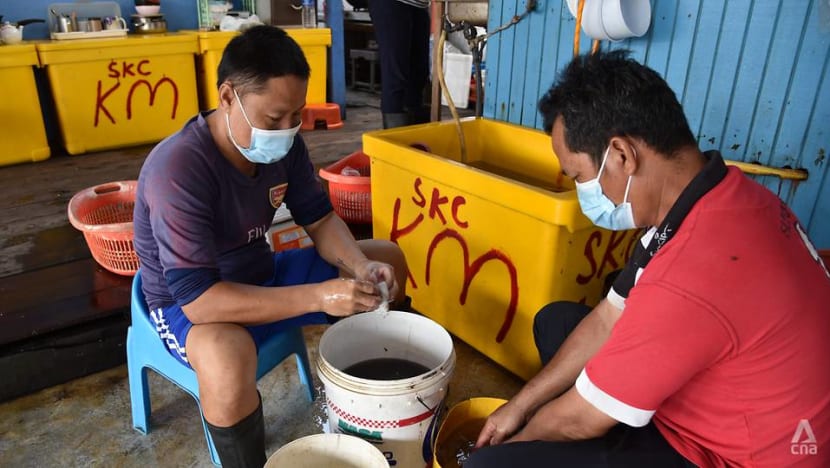
Dr Tan said changes in the sea surface temperatures were known to affect Malaysian marine life in a number of ways.
“You have more frequent harmful algal blooms, increased incidences of diseases and parasites,” she said.
In a tropical locale like Malaysia, she added, many seaborne pathogens are temperature sensitive.
“The growth rates of marine bacteria and fungi are positively correlated with temperature, hence resulting in increased fish mortalities due to disease,” she said.
Dr Henry Chan, the conservation director for World Wide Fund for Nature (WWF) Malaysia, added that warmer sea waters would lead to corals expelling their algae, causing the coral to turn white, the process which is also known as “coral bleaching”.
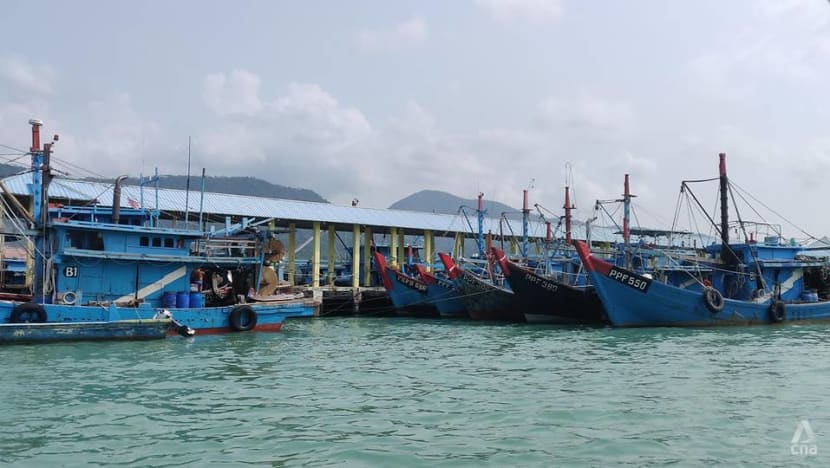
“This is important to note, because coral reefs provide a permanent habitat for many important fish species as well as endangered species.
“Some of the important species, which are commercial ones, in turn provide food and livelihood security for coastal communities,” Dr Chan explained.
Dr Chan pointed out that acidification made it more difficult for marine organisms, including commercially important ones like shrimp and shellfish to form their protective shells.
"If the ocean water becomes too acidic, it can start dissolving their shells, and in turn, alter the food web too, where these animals are important food sources for commercial fish species," he said.
Dr Tan also told CNA that changes in temperature and oxygen could either reduce or enhance plankton productivity. These microscopic algae (phytoplankton) or animals (zooplankton) form the basis for various food chains in the marine system.
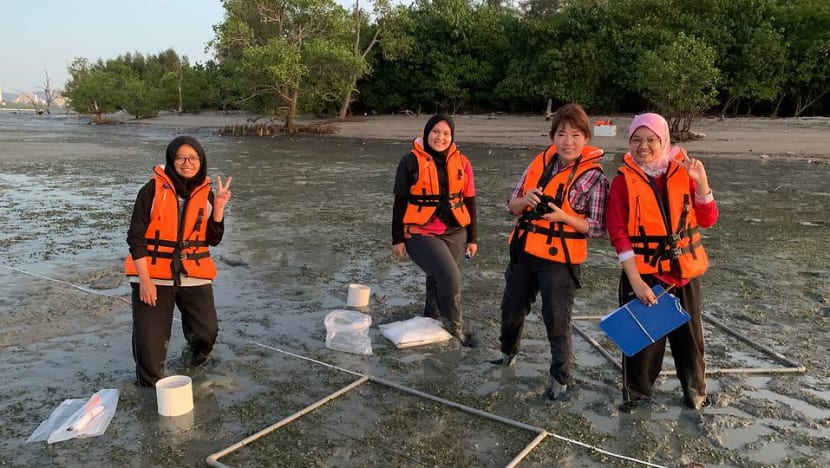
“For example, consistently large decreases in catch potential, may primarily be as a result of a decrease in plankton productivity, and simultaneous loss of habitat can amplify this,” Dr Tan said.
She also referred to other scientific literature where in some cases, some species were projected to become locally extinct in tropical areas, and this local extinction rate increased with atmospheric CO2 concentrations.
URGENT NEED TO CUT EMISSIONS
For Dr Tan, a consequence of warmer oceans would mean its ability to remove CO2 from the atmosphere would decrease, leading to a downward spiral where CO2 would accumulate in the atmosphere with the ocean unable to function as a carbon sink.
“One way that humans can ward off this feedback loop is by accelerating the global shift from fossil fuels to renewable energy,” she said.

Meanwhile, Dr Chan said while the 2016 Paris Agreement called for action to limit the global average temperature increase to up till 1.5 degrees Celsius, global average temperatures recorded last year showed that this had already increased by 1.16 degrees Celsius, and that the effects of climate change that were happening would still go on even if all man-made carbon emissions were removed.
He pointed out that even natural ecosystems which helped mitigate climate change, such as tropical and mangrove forests, as well as the seagrass and coral beds that help remove carbon from the atmosphere, were also simultaneously being threatened by climate change.
“We don’t have a choice but to enhance emission removals from economic activities and to protect and conserve these important areas to address climate change,” Dr Chan said.
Back in September 2019, then-deputy Agriculture and Agro-Based Industries Minister, Sim Tze Tzin stated that climate change was among the factors impacting Malaysia’s fisheries industry.
He called for more marine parks along coastal areas. He also said that fishermen had to adapt and move further into deep-sea fishing.
Mr Sim had pointed to parliamentary approval given for Penang and Langkawi fishermen to carry out high seas tuna fishing. This was in conjunction with the Indian Ocean Tuna commission giving its approval as well.
Generally, Mr Chia Tian Seng, the fishery owner in Sekinchan, has a pessimistic outlook on fish stocks.
He fears that long before the full effects of climate change could hit the fishing community, human demand for fish would strip the seas bare first.
"Here, there are a lot of smaller purse-seine (a type of fishing net method) vessels, and most only fish from eight nautical miles onwards."But as you head out further you have even larger vessels, and they use even more effective methods to catch as many fishes as possible," he said.
CNA has approached the Malaysian Agriculture and Food Industries Ministry for comments on the impact of climate change on Malaysian waters, assistance plans for fishery communities and proposals to ensure fish supply for domestic food security.












